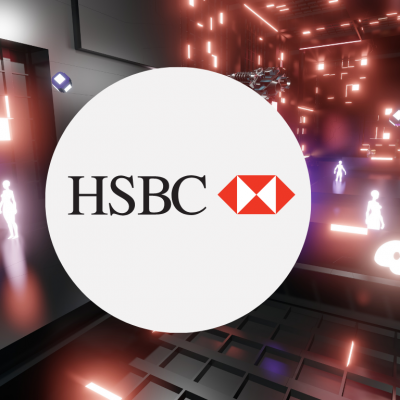The metaverse (the internet) is becoming an increasingly important part of the global economy. As it grows, so does its importance in terms of how we shop and what we do for work. Yet one sector whose growth has been relatively stagnant over recent years is food production, raising questions about whether blockchain can help bring a new level of transparency to that industry too.
The “metaverse stock” is a question that many people are asking. The Metaverse has the potential to help the food sector, but it’s not clear how yet.

The use of blockchain technology in the food industry started with the introduction of a Bitcoin Pizza Day, and it is now going into the Metaverse. With one anchored in the digital sphere and the other firmly established in the physical, crypto and the food sector may not seem to be the most natural match.
Going back to the beginnings of cryptocurrency, the first real-world use case for Bitcoin (BTC) was in the food industry. Laszlo Hanyecz made the first recorded commercial BTC transaction on May 22, 2010, when he paid 10,000 BTC for two Papa John’s pizzas.
That day is now known as Bitcoin Pizza Day on the bitcoin calendar. Independently, the event has grown into an annual festival, with food chains and cryptocurrency firms using the marketing potential.

Bitcoin Pizza Day not only commemorated Bitcoin’s first day as a means of exchange, but it also marked the beginning of cryptocurrency’s connection with the food sector, which is already flourishing and is anticipated to grow as Web3 and the Metaverse take hold.
The Insatiable Hunger of Cryptocurrency
Aside from Bitcoin Pizza Day, the crypto community has always seemed to enjoy food-related trends. A careful examination of any list of “dead currencies” will reveal several instances of culinary-sounding tokens such as Onioncoin, Baconbitscoin, and Barbequecoin. Coinmarketcap also lists Pizzacoin.
They seemed to be tokens without any viable underlying technology to support them, much like the majority of the projects that jumped on the initial coin offering (ICO) craze. Nonetheless, the arrival of the DeFi period ushered in a new wave of food-related norms, the most of which have thrived to this day. The most apparent examples are PancakeSwap and SushiSwap.
Regardless of names, there have been many additional advancements at the intersection of crypto, blockchain, and the food business in the years between the ICO boom and the bull run market of 2021. One of the sectors that has demonstrated to be ripe for significant upheaval is food traceability.
IBM’s Food Trust is largely associated with grocery stores like Nestlé and Carrefour. However, the company has collaborated with a California-based chain of seafood restaurants to increase openness about the origins and treatment of its menu items even before they reach the table.
However, it is in the area of client relationships that blockchain and cryptos shine for the food industry. Due to the rising prominence of services like Uber Eats in recent years, and especially after the epidemic, eateries have found themselves more separated from their customers.
It’s hardly unexpected that the platform model has already invested in a variety of industries, including hotels (Airbnb), transportation (Uber), and music (Spotify) (Spotify). The platform model, when applied to the restaurant business, implies that internet corporations take over the client connection, including data management, payment processing, and loyalty programs.
Because the food operators are pushed to the backdrop, their product is the only component of the scene that the customer sees. Worst of all, depending extensively on a platform may result in a 90 percent rise in the price of food.

Getting the Balance Right
By establishing a direct link between eateries and their customers, cryptocurrency and blockchain are now in a position to help restore the equilibrium. According to experts, a blockchain-based marketplace for food operators would provide a comparable and user-friendly one-stop shop for discovering numerous menu options and allowing restaurants and consumers to freely engage, with merchants having complete control over their pricing, menus, and conditions.
It implies that instead of playing into the hands of a controlling third party, customers will pay merchants directly. Instead, their partners serve as infrastructure providers for food retailers and restaurants, offering them with the resources they need to run their online stores based on merit.
Despite this, the ecosystem is still just a fraction of its full potential, which is predicted to emerge as the Metaverse transition accelerates.
Is it possible for food to enter and live in the metaverse? There is no space for activities that are primarily grounded in the actual world, such as eating. Consumption of digital media has its limits. However, as we continue to spend the majority of our time online, the food industry will inevitably change. The question arises as to how foodservice providers will exist in the Metaverse.
A Delightful Culinary Adventure
In certain circumstances, rich gastronomic experiences are available. Chipotle, a popular American food business, launched a virtual restaurant for Roblox gamers for Halloween. Anyone who attended the restaurant was treated to a frightening, Halloween-themed encounter before receiving a discount code for a free burrito in the real world.
Generally speaking, the expansion of food service into the Metaverse will be a continuation of a digitalization process that has already begun. Along with the platform model’s adoption and dominance in the food delivery and takeaway market, it is also customary to begin the restaurant experience online by scouring TripAdvisor and Google for all accessible alternatives.
A restaurant’s website may be used to see the menu as well as images and videos of meals and the restaurant itself. Imagine watching your team play a virtual major game and seeing advertisements around the stadium for all the locations where you can dine afterward, similar to what happens in actual stadiums now.
After the game, if you’re hungry for some takeaway, you may take your avatar down to a virtual street food market and look at the various operators and their menus, which are depicted as virtual meals.

When you’re ready to place an order, you must pay with cryptocurrency right away, and your food will be delivered to your door in the following half hour. You may choose your desired location and even table based on your virtual tour if you want to impress someone who means the world to you in real life with a delicious lunch at a high-end restaurant.
You may also talk to virtual chefs about the preparation and components of a certain dish, or explore the wine selection with a virtual sommelier who can help you choose the best meal matching options.
Countless Possibilities
All of these situations are simply envisaged from the perspective of the consumer; the possibilities for the restaurant are limitless. For example, if someone reserves a table after taking a virtual tour, the restaurant may ask for a bitcoin booking deposit to be provided using a smart contract-based escrow mechanism.
That might help prevent one of the most common problems in the restaurant industry: no-show reservations. If the individual fails to appear, the smart contract simply delivers the escrow payments to the eatery. The foodservice industry hasn’t reaped the benefits of the digital transformation thus far.
Nonetheless, blockchain and cryptocurrency provide a way to repair the connection between food retailers and their consumers. Aside from that, the Metaverse is intended to provide a tremendous amount of new value for the whole business.



